3,800-year-old burial of tall warrior buried with 4-pronged spearhead unearthed in Azerbaijan
The burial holds a Bronze Age man who stood more than 6 feet, 6 inches tall and may have been a military leader.
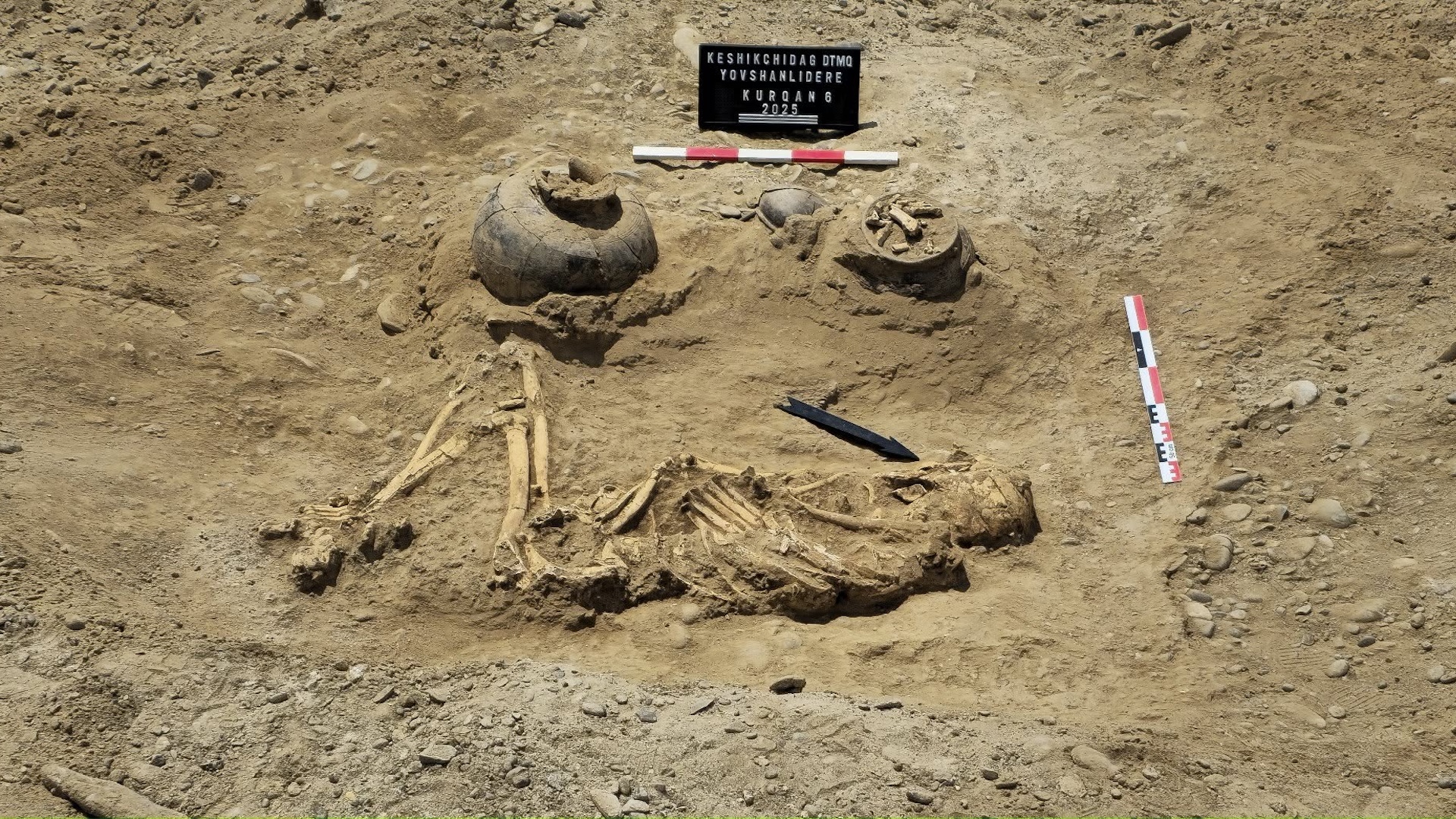
Archaeologists in Azerbaijan have unearthed the 3,800-year-old tomb of a towering warrior who was buried with a four-pronged spearhead in his hand.
The tomb was found on the remote and windswept plains of Ceyranchol, just a few miles from Azerbaijan's western borders with both Georgia and Armenia. The burial mound — known locally as a kurgan — is on the Keshikchidagh historical and cultural reserve, an area known for its natural and human-made caves, castles and early Christian monasteries.
An analysis of the man's skeletal remains indicate that he stood around 6 feet, 7 inches (2 meters) tall when he was alive in about 1800 B.C., during the Middle Bronze Age.
According to a translated statement from government authorities, the ancient tomb and remains were discovered inside a newfound kurgan that was more than 90 feet (28 m) across and more than 6.6 feet (2 m) high.
The burial chamber itself was divided by walls into three parts. One contained the body and equipment, including weapons; another held only pottery vessels; and a third part was empty. The division within the tomb may have reflected a belief in an "other world" after death, the researchers said in the statement.
Related: Stunning reconstruction reveals warrior and his weapons from 4,000-year-old burial in Siberia
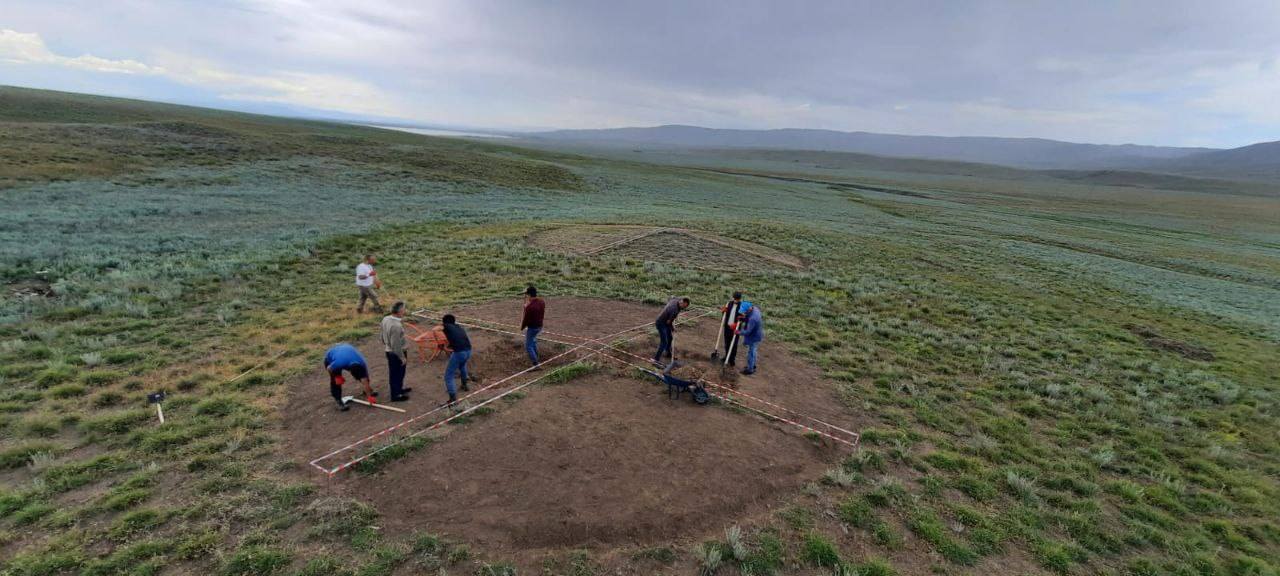
The burial mound was found this year within the Keshikchidagh cultural reserve in the far west of Azerbaijan.
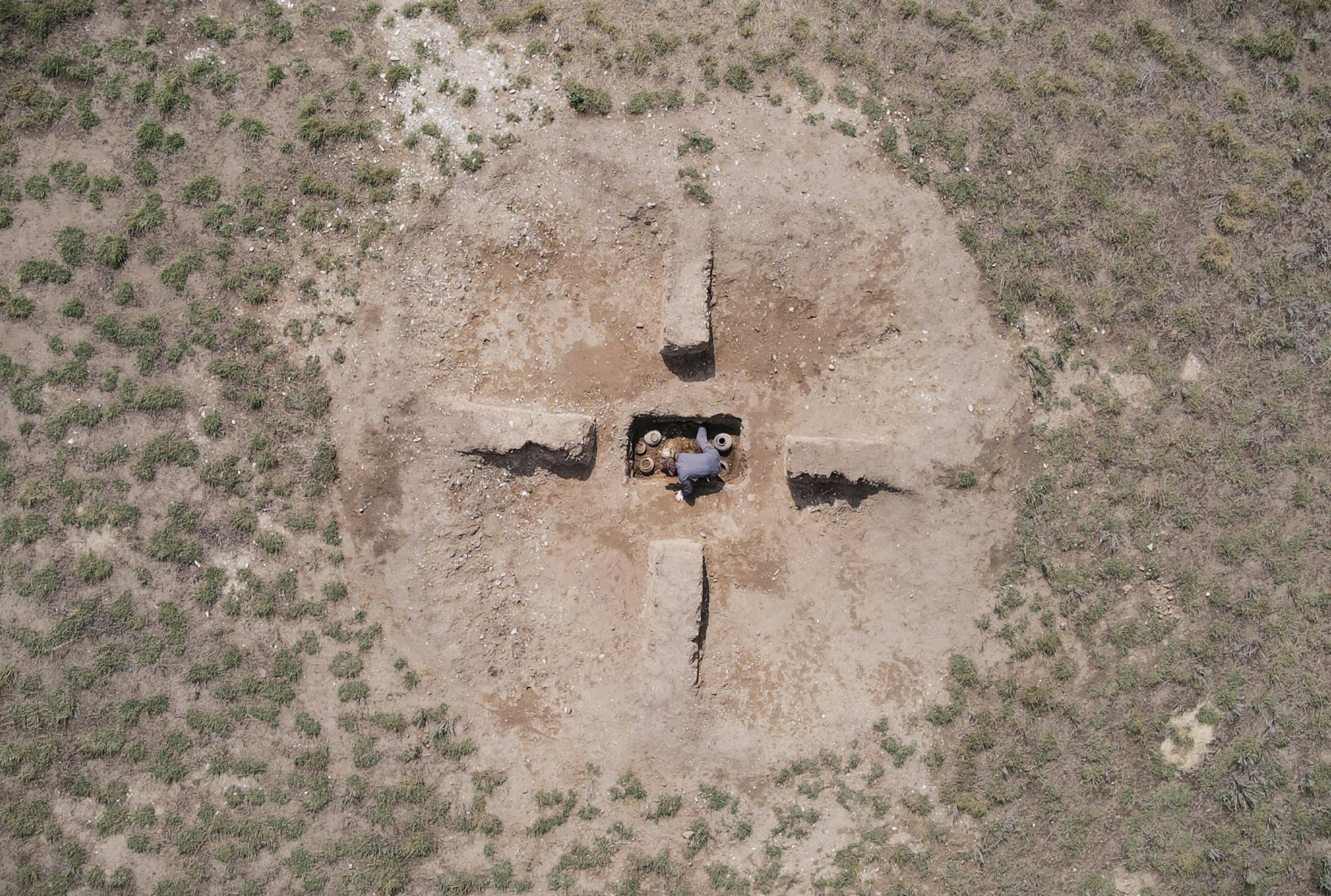
Ancient burial mounds like this are called kurgans in Eastern Europe and Central Asia, from a Turkic word meaning "mound."
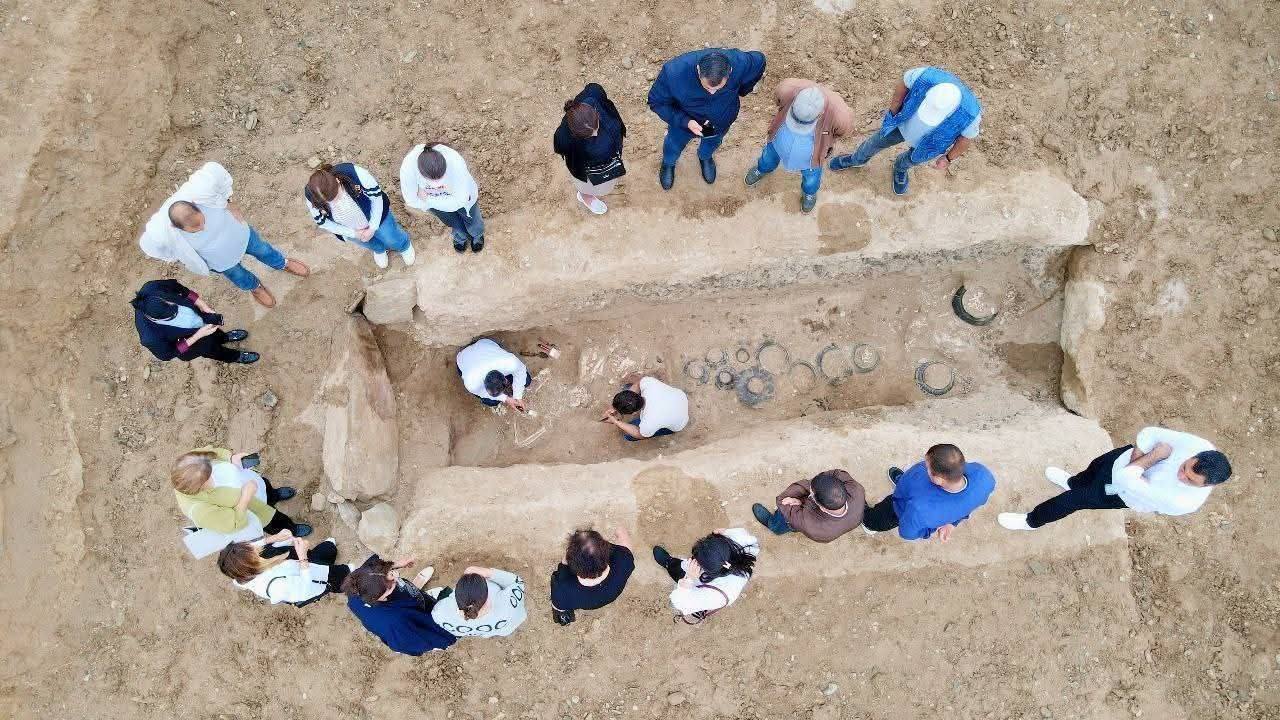
Government archaeologists, university academics and volunteers have carried out excavations in the Keshikchidagh cultural reserve for the last five years.
Warrior's tomb
The warrior's remains were found in a "semiflexed" position, and he was holding a bronze spearhead.
Get the world’s most fascinating discoveries delivered straight to your inbox.
Bronze adornments were also found around one of the man's ankles. Other grave goods included glass beads, obsidian tools, and "twelve inlaid and richly decorated earthenware jugs," the statement said. Some of the jugs contained the remains of animal bones that had apparently been cooked for the warrior to eat after death — "food for the afterlife," according to the statement.
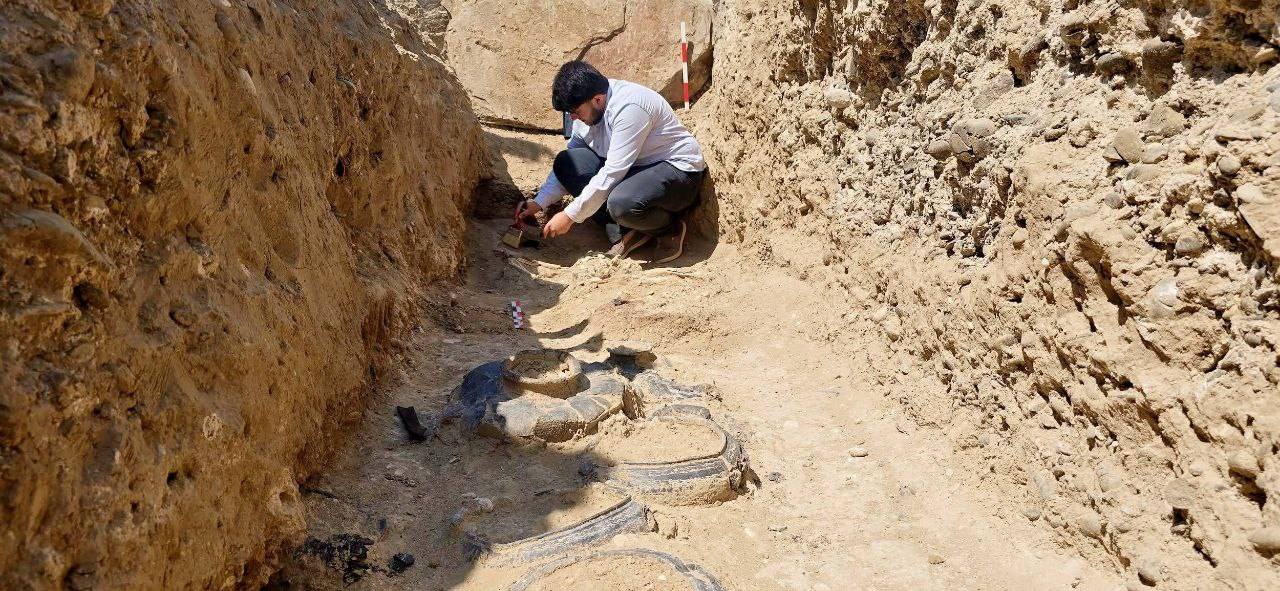
Archaeologists think the rich style of the tomb at the center of the kurgan shows that a military leader was buried there.
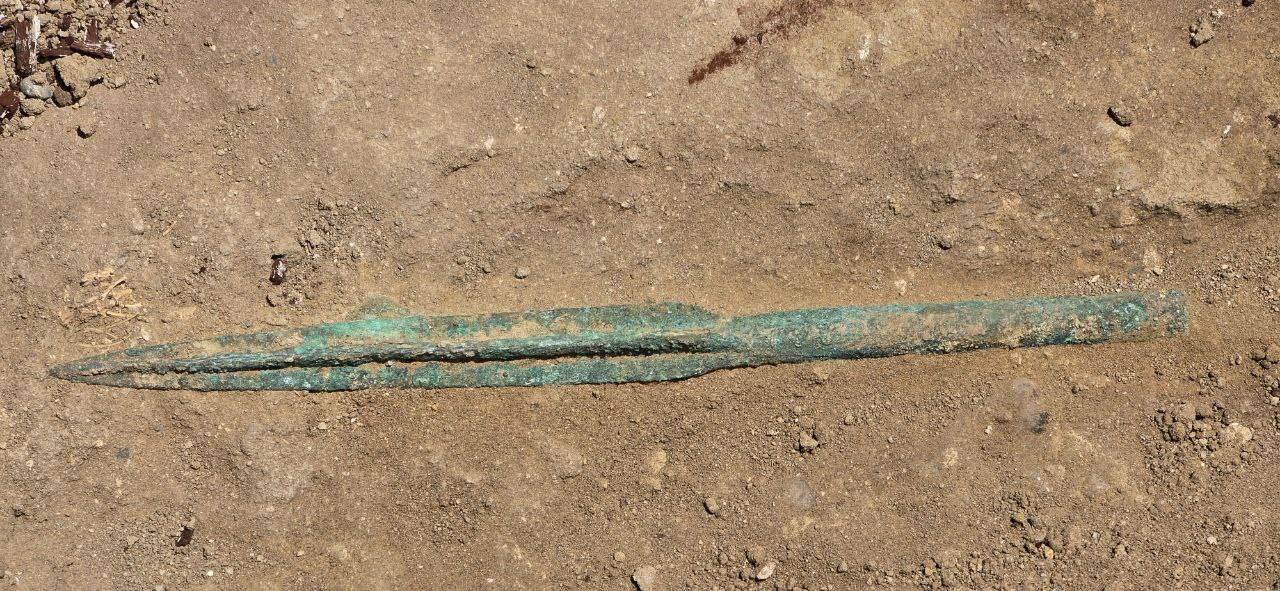
The dead man in the tomb was buried while holding a distinctive bronze spearhead in one of his hands.
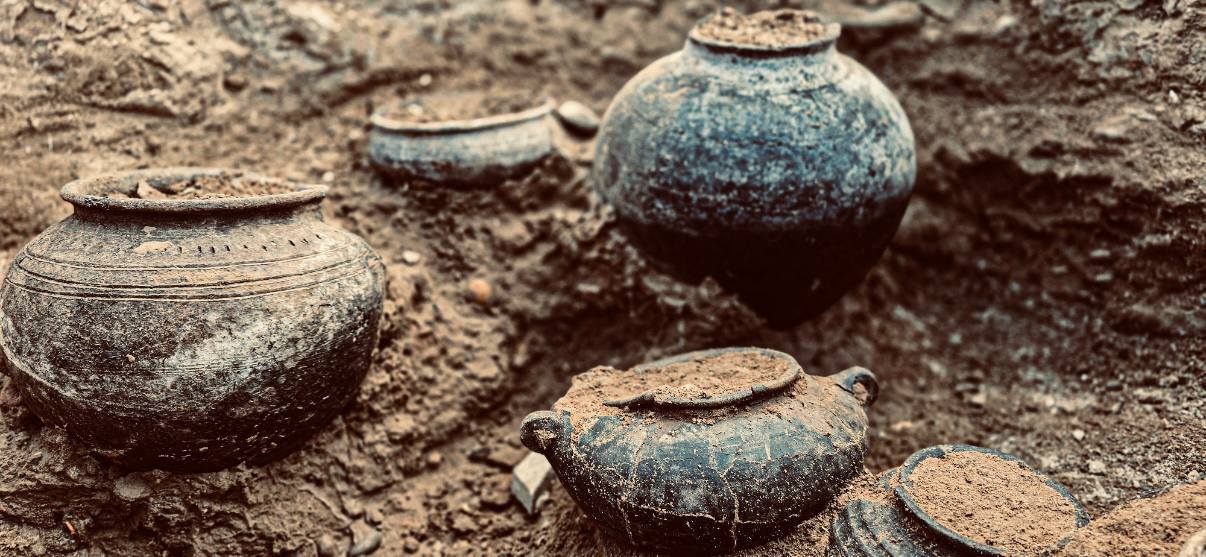
The researchers also unearthed several pottery jugs filled with the remains of cooked animal bones, apparently interred as food for the dead man.
The archaeologists said the style of the tomb indicates that the man had been a warrior, and perhaps a military leader. In particular, the bronze spearhead he was holding was in a distinctive "four-pronged" style and a rare find in the region, the statement said.
Azerbaijan boasts hundreds of kurgans dating to the Bronze Age (roughly from 3300 to 1200 B.C. in this region) and Iron Age (from about 1200 to about 600 B.C.) The Keshikchidagh reserve is an archaeological hotspot, and for the past five years more than 2,000 university academics, volunteers and government archaeologists have excavated parts of it, including Shamil Najafov, an archaeologist at the Institute of Archaeology and Anthropology of the Azerbaijan Academy of Sciences, who led the latest excavation.
Tom Metcalfe is a freelance journalist and regular Live Science contributor who is based in London in the United Kingdom. Tom writes mainly about science, space, archaeology, the Earth and the oceans. He has also written for the BBC, NBC News, National Geographic, Scientific American, Air & Space, and many others.
You must confirm your public display name before commenting
Please logout and then login again, you will then be prompted to enter your display name.


